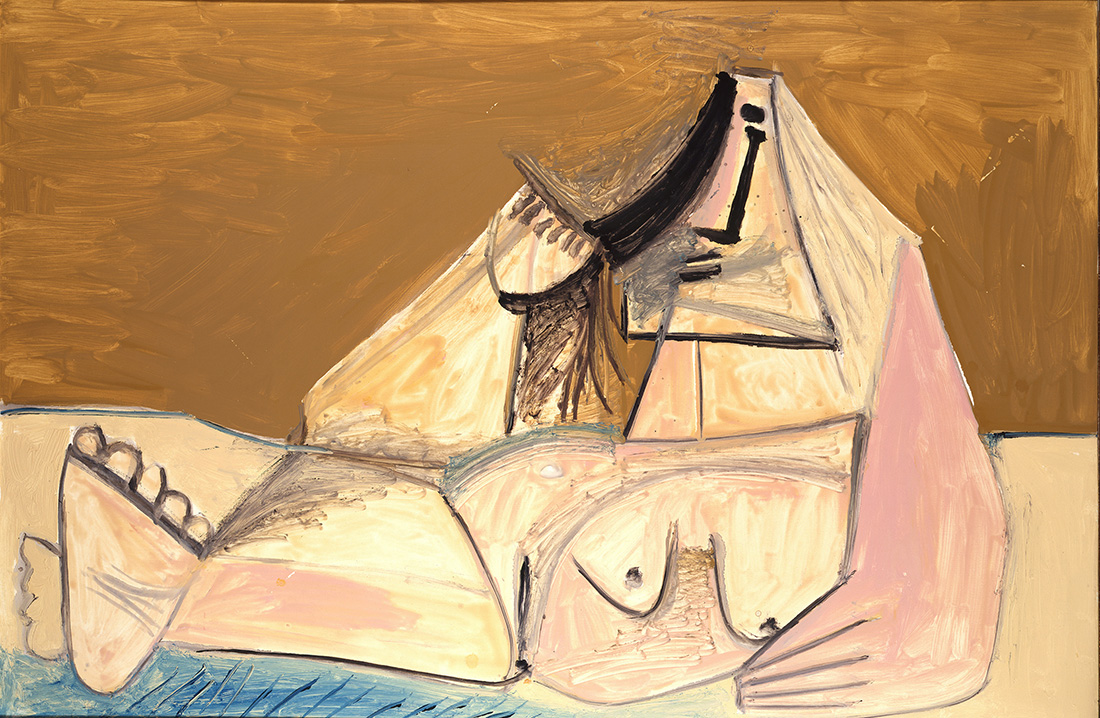
Pablo Picasso, Nu allongé/Utsträckt nakenmodell, Mougins, 7 september 1971. Private Collection. © Succession Picasso/Bildupphovsrätt 2025. Foto: Peter Schälchli, Zürich/Private Collection
The Last Exhibition: Pablo Picasso 1970–1972. 201 Paintings
Pablo Picasso
Runtime: 01:56
Narrator: The arrangement of the works on this wall echoes the way Picasso chose to present his paintings in his final exhibition.
On 23 May 1973, six weeks after Picasso’s death, the exhibition Pablo Picasso 1970–1972. 201 Paintings opened in the Papal Palace in Avignon. It was the last major exhibition the artist himself had planned. He had selected the works during the final months of his life, and the catalogue was completed shortly before his death on 8 April 1973.
The exhibition was held in the large Gothic halls of the Papal Palace, a building that had previously hosted festivals and theatre productions. The hanging consisted of densely placed paintings of different formats, often arranged in several rows, without clear chronology or thematic grouping. It reflected the ordering of Picasso’s studio in Mougins, where in his final years he worked with immense intensity, producing more than two hundred paintings between 1970 and 1972.
The exhibition attracted considerable attention. It was a major public success, and tens of thousands of visitors came to Avignon during the summer of 1973. Critics, however, were divided. Some reviewers argued that the works were executed too hastily or were difficult to interpret, while others emphasised their vitality and experimental spirit.
The Avignon exhibition came to play a central role in subsequent assessments of Picasso’s late work. During his lifetime and in the years following his death, this period was often regarded as less significant. From the 1980s onwards, however, scholars and contemporary artists have shown increasing interest in these paintings. Several artists – among them Georg Baselitz and Jean-Michel Basquiat – have cited Picasso’s late production as a key source of inspiration.